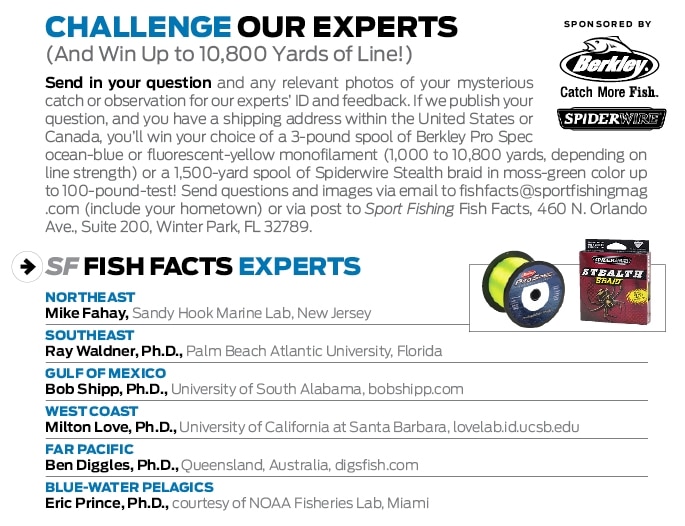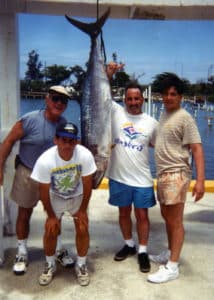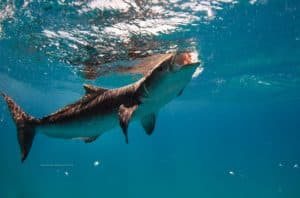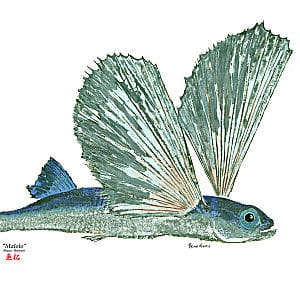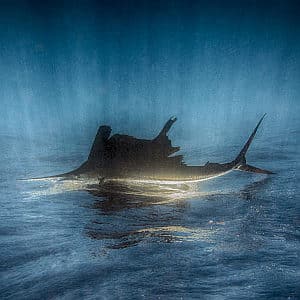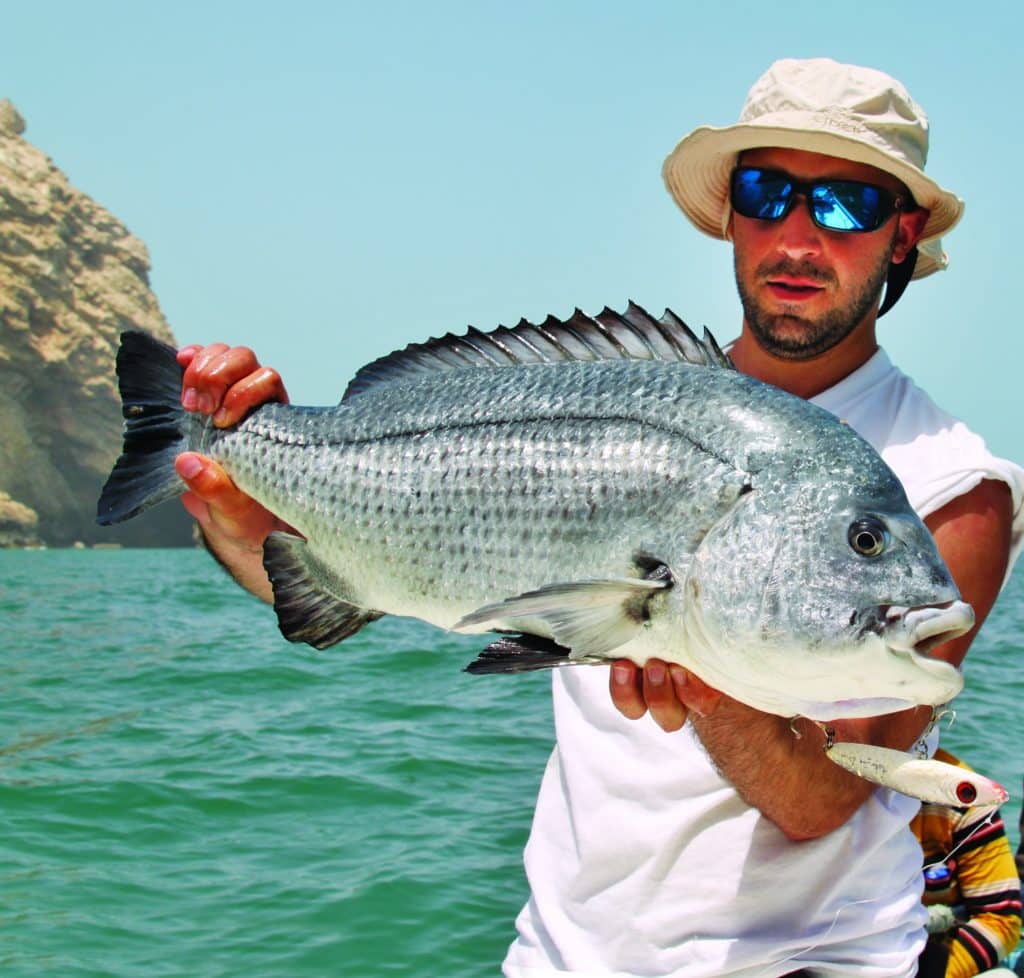
Middle-Eastern Mystery
While fishing stickbaits in the waters of southern Oman around Salalah, we caught quite a variety of fishes — including this one. It proved a tough fighter. What is it? How large does it get, and where is it found?
Laurent Laffère
Paris, France
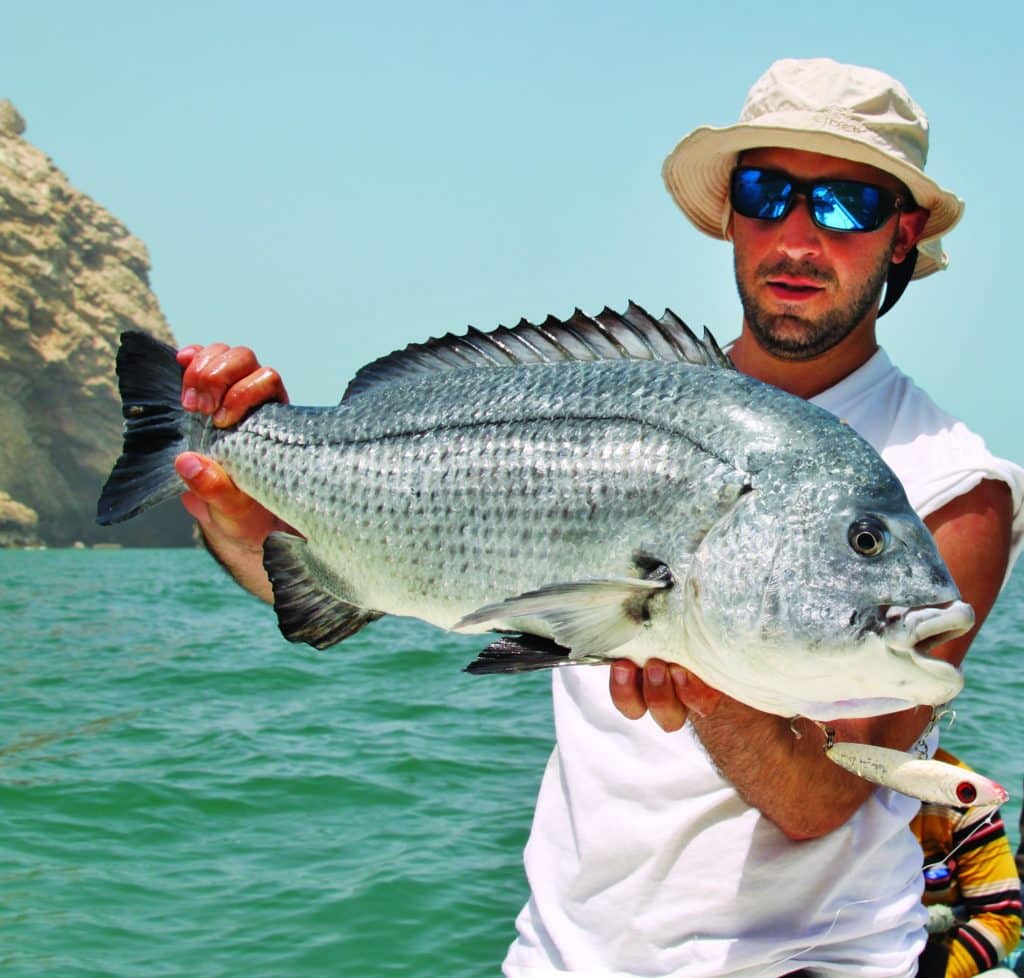
Middle-Eastern Mystery
Great fish, Laurent! You have caught a sobaity sea bream (Sparidentex hasta), which is one of the larger porgies (family Sparidae). Also known as the silver-black porgy, this species can be encountered in inshore coastal waters of the western Indian Ocean, from India throughout the Persian Gulf and nearby areas of the Middle East. They grow to a length of around 32 inches and a weight of at least 13 pounds. Their mouths are equipped with unusually large, fanglike teeth, showing that (for a porgy) they are highly predatory (especially if they eat stickbaits). They’re known to feed mainly on a wide variety of baitfish rather than the mollusks and crustaceans more usually eaten by their relatives, other porgies such as pinfish or the Australian bream (Acanthopagrus species). Compared to other sparids, sobaity sea bream are a relatively fast-growing species, reaching 12 inches long in their second year and 24 inches in their fourth year; trophy fish can live for at least 11 years. They are also protandrous hermaphrodites that mature first as males when they are 1 to 2 years old, before some change into females from age 2 onward. Spawning occurs once a year in the Persian Gulf between January and March.
— Ben Diggles
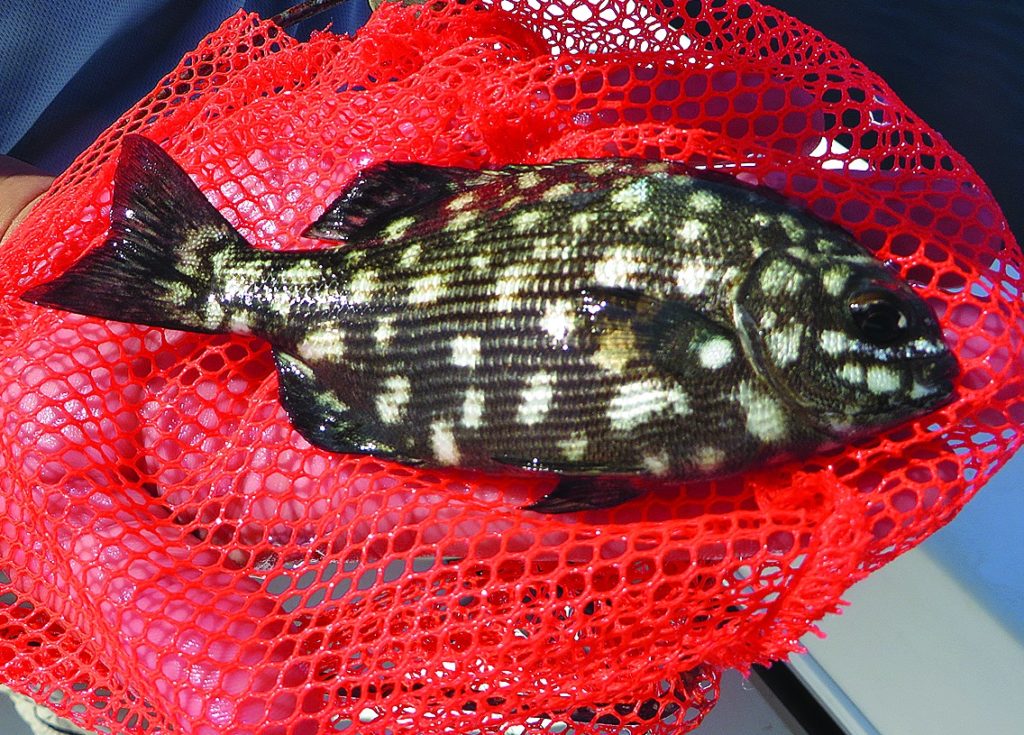
Chub in a Tub
I found this fish hiding inside a floating 55-gallon drum when we were out fishing for tuna and mahi off the coast of Long Island, New York. Under the drum were one mahi and a bunch of triggerfish. Then I looked into the drum and saw this guy. From its shape, I thought it might be in the damselfish family.
Capt. Kirk Fay
Blue Point, New York
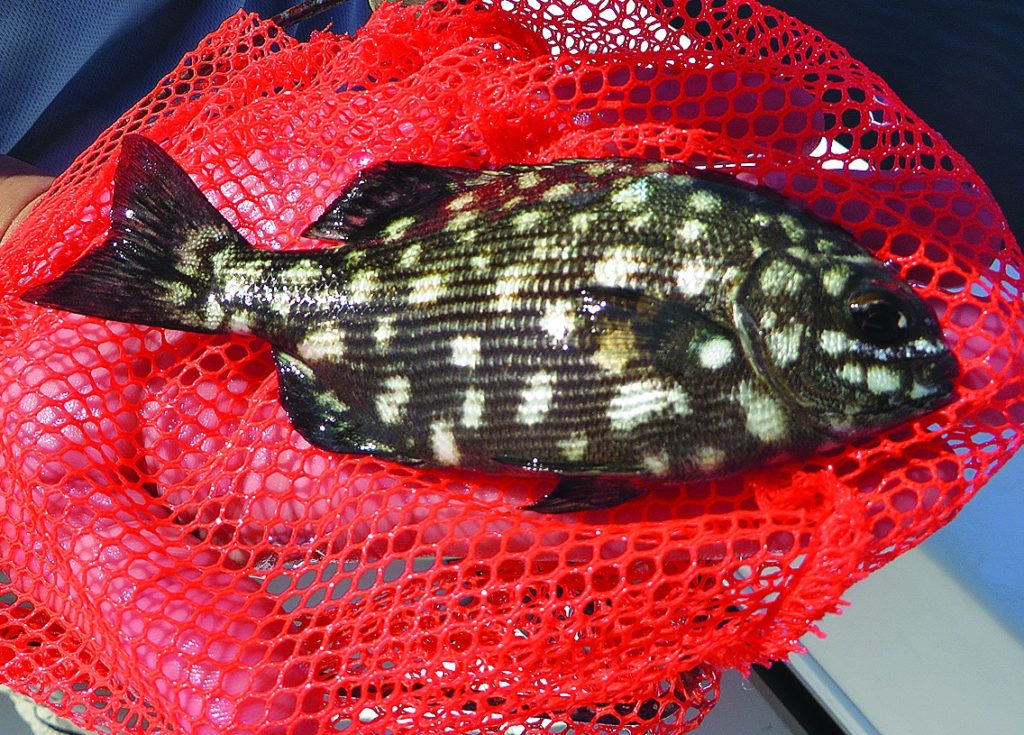
Chub in a Tub
Your fine specimen, beautifully photographed, is a chub, family Kyphosidae. Two species of chubs might be encountered in your neighborhood: Kyphosus sectatrix (the Bermuda chub) and K. incisor (the yellow sea chub). I would need to count characteristics such as fin rays to decide which species is yours, but I can’t make out those details from the photo. Both species get quite large (to about 28 inches), and are fine game fish and good eating, despite their typically foul-smelling guts. Young stages are strongly neustonic, meaning found at the surface, especially around floating objects — such as 55-gallon drums. Although adults are fairly drab in color, your critter is exhibiting a pale-spotted pattern said to be an aggressive behavioral display. Apparently it took exception to your invading its privacy.
— Mike Fahay
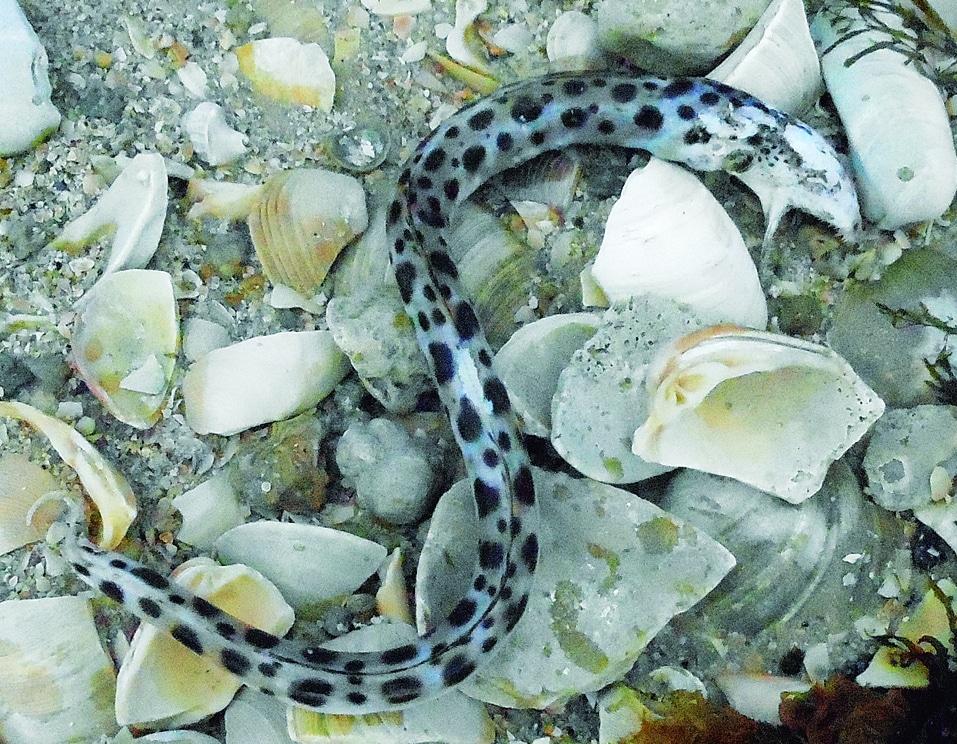
Gag Me with a Spoon-Nose
My husband and son were recently fishing along Florida’s Sanibel Causeway, and the red tide had washed up a few dead fish, mostly mullet and catfish. While walking along the shore, I came upon this dead creature, and would like to know what it is.
Karen Clark
Scotts, Michigan
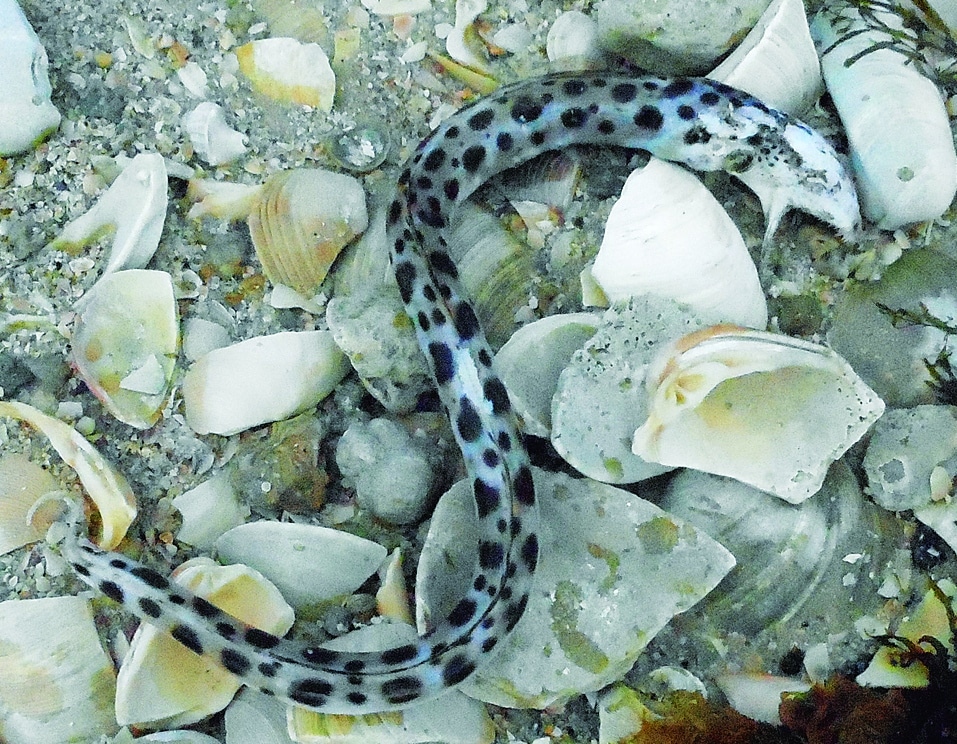
Gag Me with a Spoon-Nose
It’s a bit difficult to offer a certain identification due to the fish’s damaged condition, but based on its pigmentation, the position of its eye and what I can see of its dentition, I believe it’s a spotted spoon-nose eel, Echiophis intertinctus . This species grows to more than 5 feet in length and ranges from North Carolina and the northern Gulf of Mexico south to Brazil, including at least some of the Caribbean islands. Not much is understood about the species’ biology, but it’s known to occur from inshore waters to depths of over 300 feet. The spotted spoon-nose eel belongs to the family Ophichthidae, the members of which are commonly called snake eels because of their snakelike appearances.
— Ray Waldner
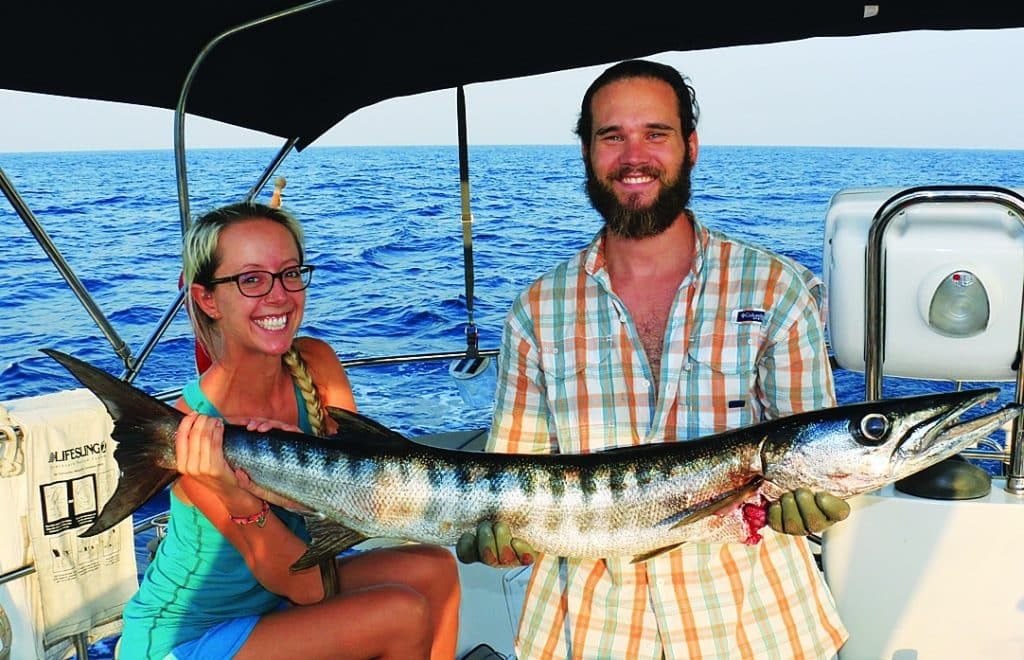
Black Fins Tell the Tale
This barracuda measured 53 inches long and weighed 22.5 pounds. We caught it in 165 feet of water off the northern Pacific coast of Nicaragua while trolling at 5.5 knots aboard our sailboat. Our lure was a pink and white plastic squid. Although great barracuda grow to be much larger, we understand that this is quite a beast for a ‘cuda in this region.
Jessie Mackelprang-Carter
Lynnwood, Washington
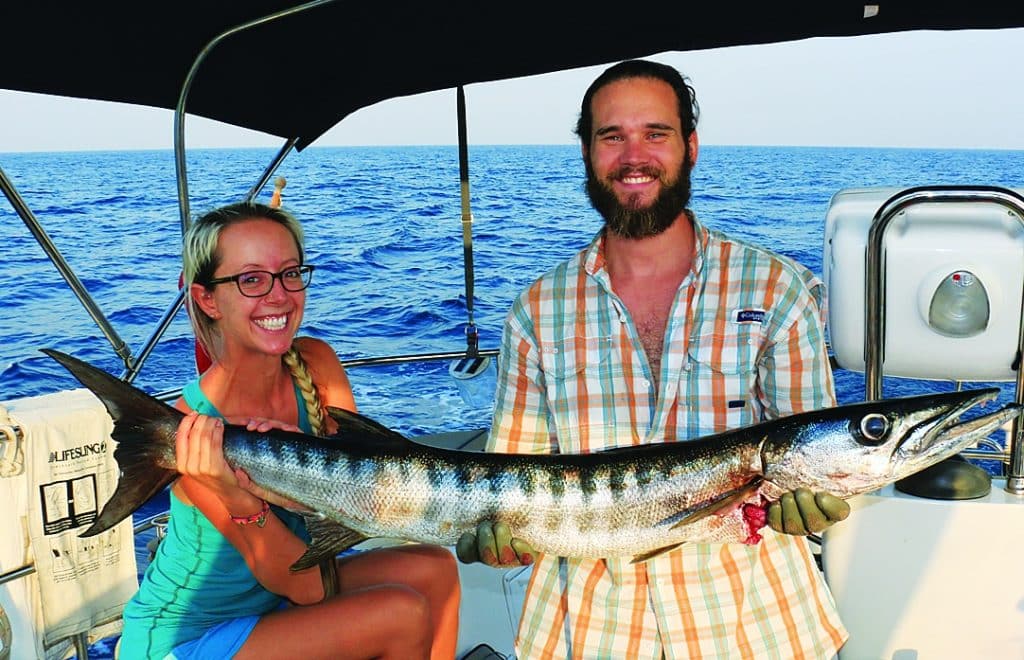
Black Fins Tell the Tale
That toothy critter you folks caught is a blackfin barracuda, Sphyraena qenie . Barracuda species tend to look similar, so I had to check with Ross Robertson at the Smithsonian Panama laboratory to make sure. The long black bars and black fins separate this species from all others. Blackfin are found in tropical waters from the Red Sea and Indian Ocean east to Mexico and down to Ecuador. However, in the eastern Pacific they do not appear to be particularly common anywhere, so your catch is pretty unusual. Reaching a length of about 5½ feet, this is one of the larger barracudas. Expect to find blackfin in substantial schools that often remain near the same reefs for months at a time. These fish are most active at night, when schools disperse and the individuals feed on other fishes. Barracuda, apparently including blackfin, have been linked in various tropical areas to ciguatera poisoning, so some caution should be employed when eating them. — Milton Love
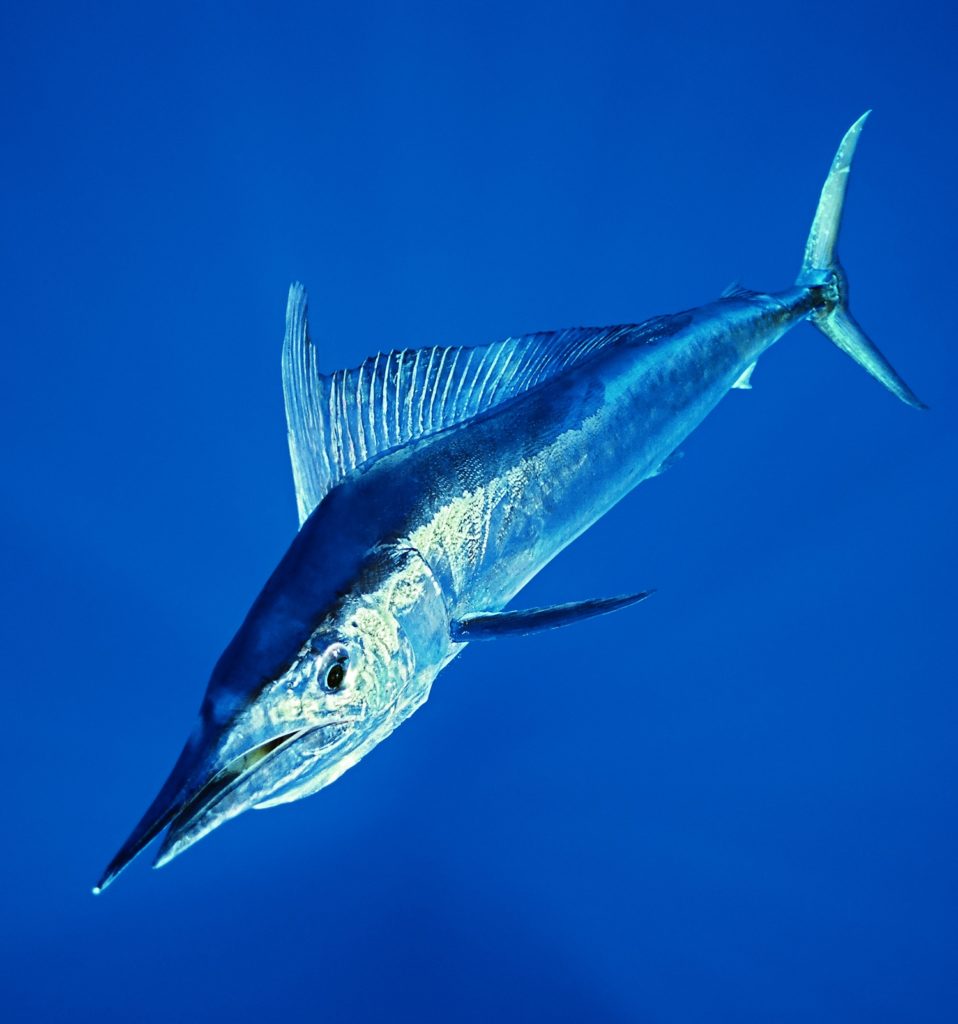
From the FISH FACTS Archives
(Tetrapturus angustirostris)
The rarest of billfishes, and one that few anglers ever see, is the spearfish. This shortbill was photographed off Kona, Hawaii. Kona and New Zealand account for most catches of the species, though the IGFA all-tackle record of 110 pounds, 3 ounces, came from the waters outside Botany Bay, near Sydney, Australia. Masa Ushioda / Seapics.com
